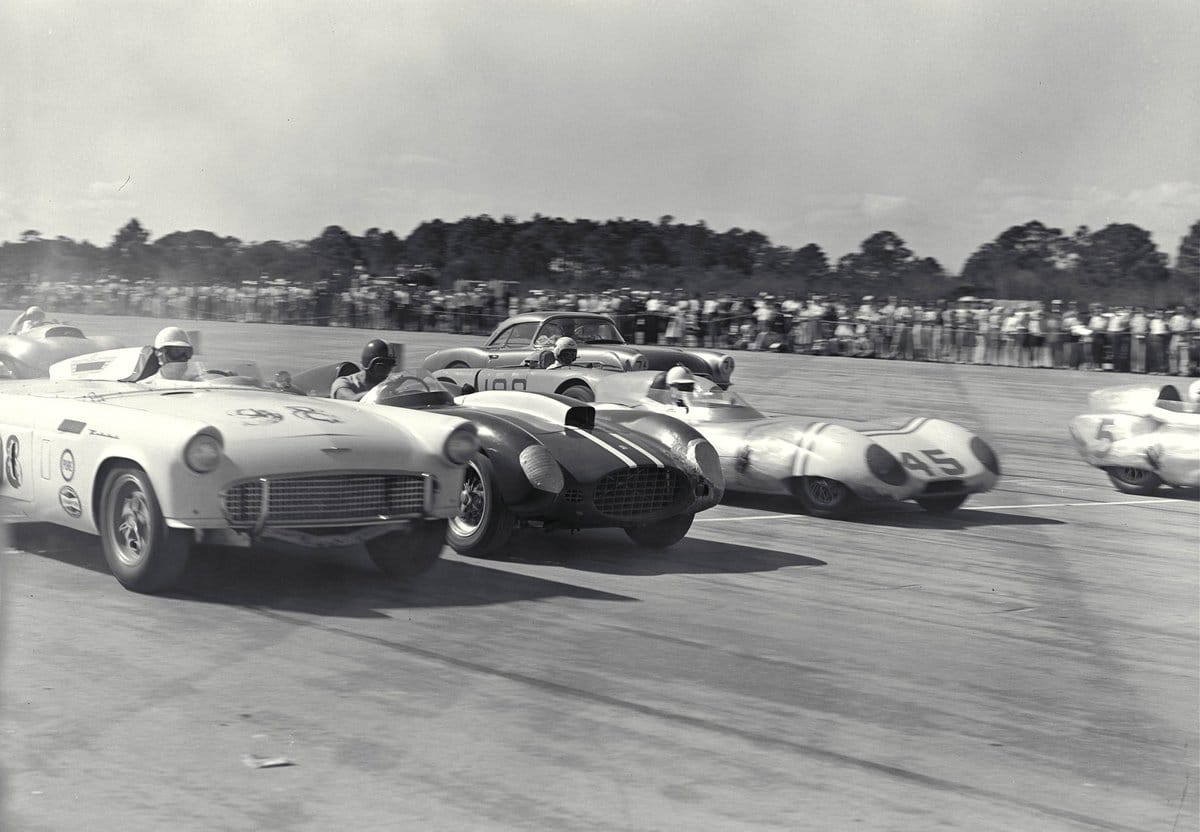Happy 4th to my American friends! I felt like this factory racer would provide ample fireworks to ring in the holiday. Video below. ;)
In the late '50s, the American public was delighted that they had two high-performance, two-seat sporty cars to choose from: the Chevrolet Corvette and Ford Thunderbird. From the start, however, the Corvette had the upper hand in performance. With a dedicated operation at General Motors and some of the brightest minds in racing, Chevrolet had quickly and successfully lured privateer racers across North America to their sports car.
Ford Thunderbirds did not attract the same customers.
Praised more for its long-distance comfort and so-called “Continental” styling cues, the Thunderbird has always been more of a personal luxury conveyance than all-out sports car. Except, as you see, for the two Thunderbirds that Ford turned into all-out, might-have-gone 200mph race cars.
Ford decided to go head-to-head with its more nimble Bowtie-wearing competition, specially preparing two machines with extreme power and weight reduction. Affectionately called the ‘Battlebird’, in 1957 these beasts were stuffed with top racing equipment of the era and sent them to the racetrack.
With a project like this, only expert help would suffice, and Ford sent two cars to former Indianapolis 500 winner (and at that time a NASCAR car owner) Peter DePaolo, whose shop, Peter DePaolo Engineering in Long Beach, CA, took on the massive undertaking of turning a nesting pair of Thunderbirds into two wild Battlebirds.
The first car had a 6-litre Lincoln/Mercury V8 engine that enjoyed every race preparation service known to Ford, giving enough punch for a 257 km/h (160 mph) in the flying mile…48 km/h (30 mph) faster than the second-in-its-class Corvette. This car is believed to have been modified, then destroyed in competition.
The second 'Battlebird' employed a stroked 312 Y-block V8 engine, for a total of 5.7-litres (348 cu. in.). Ford then added Hilborn fuel injectors and a McCullough Phase 1 supercharger, giving one run that, according to folklore, topped 320 km/h (200 mph). After the first pass (one in each direction was needed to secure a record), the car was retired with mechanical issues. It ran again without a supercharger, but was obviously not as quick.
It’s not so much that two Thunderbirds could be turned into Jaguar C-Type-fighting race cars — it’s the ingenuity and gumption of the racers and builders who probably could have made any Ford of the era into a Jaguar C-Type-fighting race car!
